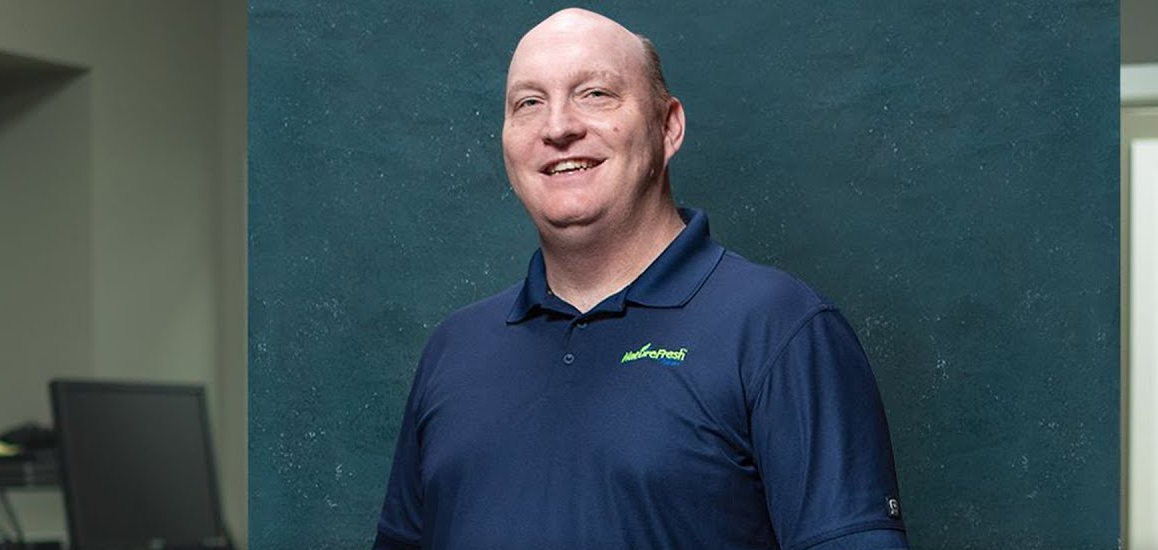 AI
AI
 AI
AI
 AI
AI
Some of the most exciting innovations in artificial intelligence are taking place outside major technology centers. Nature Fresh Farms Sales Inc. is adopting AI and automation on its greenhouse farms to boost productivity and yield, in addition to reducing pesticide use and making production safer.
“We start keeping track of everything: How much we put of water, how much water it doesn’t take, what nutrients it takes, how much it weighs — we actually weigh the vines to know how much they are in real time,” said Keith Bradley (pictured), director of information technology at Nature Fresh Farms. “We do everything top to bottom, so we actually control the life cycle of the plant.”
Bradley spoke with Dave Vellante, host of theCUBE, SiliconANGLE Media’s livestreaming studio, for a digital CUBE Conversation. They discussed how Nature Fresh Farms is adopting technology to improve agriculture, its decision to keep its IT infrastructure at the edge, its partnership with Dell Technologies Inc., and the challenges and opportunities the company had during the COVID-19 pandemic. (* Disclosure below.)
At Nature Fresh Farms’ 160 acres of greenhouse in Ontario and Ohio, over 2,000 sensors monitor all stages of growing organics, tomatoes, peppers and cucumbers. The data goes into AI algorithms that calculate exactly what is needed to improve productivity, such as the amount of light, water and fertilizer. All possible processes are automated.
“We basically collect it from the day the plant is born to the day that we actually take it all out to be composted,” Bradley said. “We analyze everything in general, and it allows us to take that data back in real time to make it better and to look at the past data to do better again.”
On top of that, the farm has what it calls a Bio Scout division, which is a group of people that are starting to use AI to look at how bugs are attacking plants. Then, the group releases a good bug — which will eventually die off — to kill the bugs that are harming the plant.
“It basically allows us to … do as close to natural way of growing a plant as possible without spraying or doing anything like that at night,” Bradley explained.
Controlling the lighting inside the greenhouses, Nature Fresh Farms can grow plants 24 hours a day, 12 months a year. Therefore, it needs much less land than conventional farming to have the same amount of production.
“Usually, you’re looking at about a 12 to 1, so for every foot squared of space, the equivalent is about 12 feet squared for a conventional farm,” he said. “Mostly because we can harvest year-round, we can continually harvest.”
Watch the complete video interview below, and be sure to check out more of SiliconANGLE’s and theCUBE’s CUBE Conversations. (* Disclosure: This segment is sponsored by Dell Technologies Inc. Neither Dell nor other sponsors have editorial control over content on theCUBE or SiliconANGLE.)
Support our mission to keep content open and free by engaging with theCUBE community. Join theCUBE’s Alumni Trust Network, where technology leaders connect, share intelligence and create opportunities.
Founded by tech visionaries John Furrier and Dave Vellante, SiliconANGLE Media has built a dynamic ecosystem of industry-leading digital media brands that reach 15+ million elite tech professionals. Our new proprietary theCUBE AI Video Cloud is breaking ground in audience interaction, leveraging theCUBEai.com neural network to help technology companies make data-driven decisions and stay at the forefront of industry conversations.